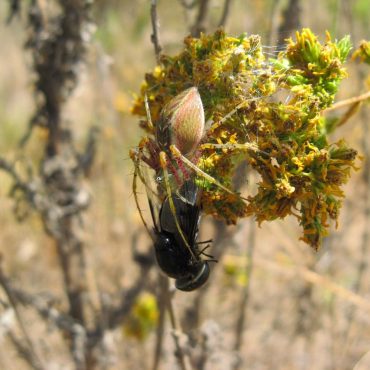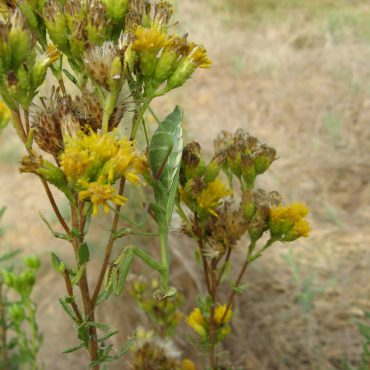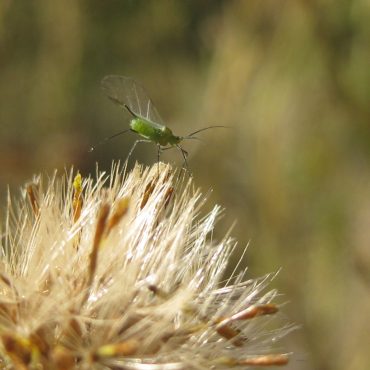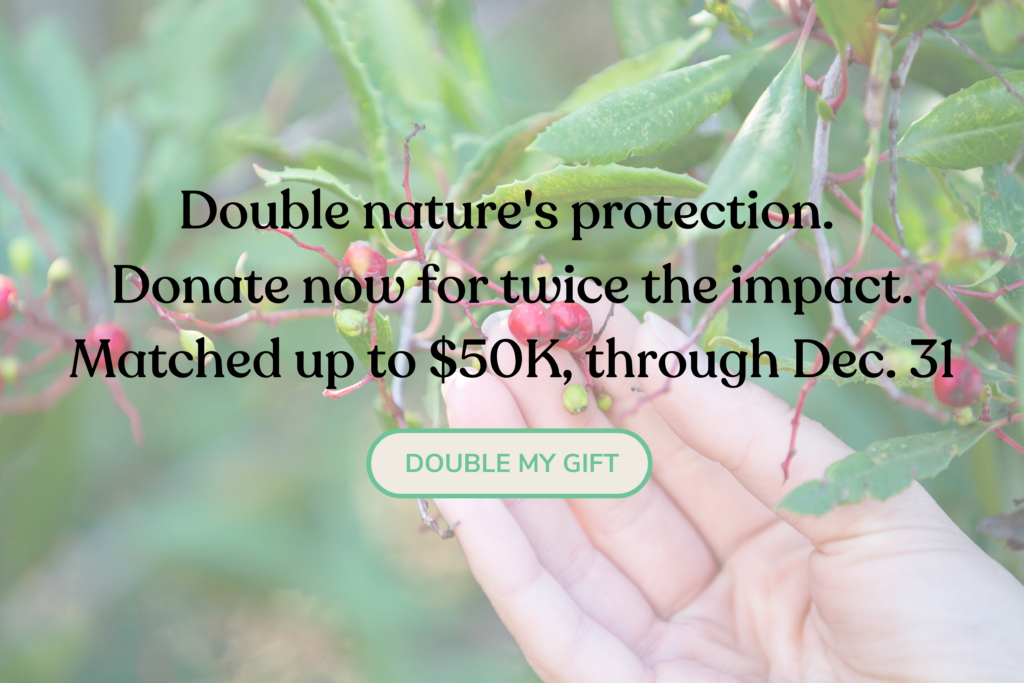In the fall, much of the flower color in the Reserve is provided by goldenbush (Isocoma menziesii), a low shrub frequently found along the trails and in dry, open areas. Because the bloom peak occurs after that of most flowers, goldenbush is important as a nectar source for insects and a hunting ground for predatory spiders and insects.
Goldenbush
Isocoma menziesii
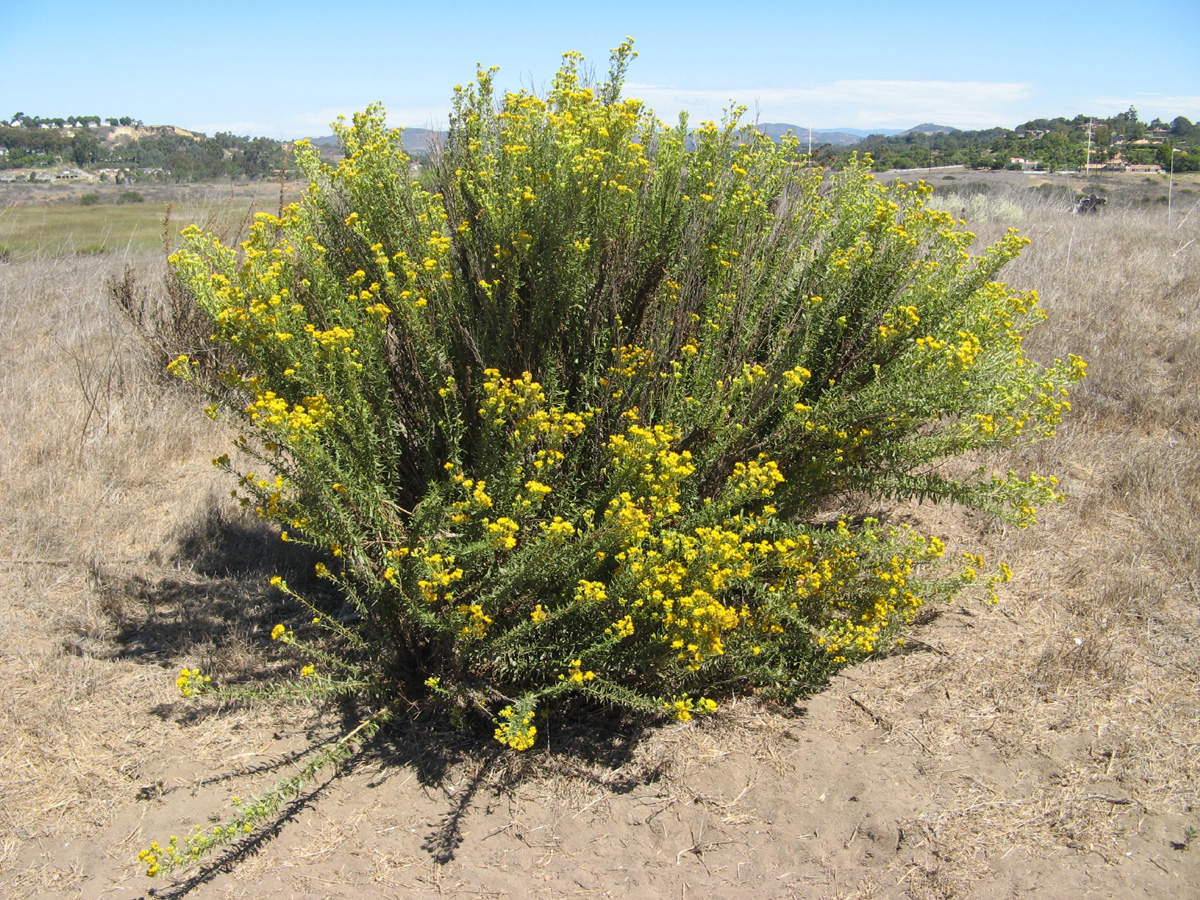
Other Common Names:
Coastal goldenbush, Menzies' goldenbush
Description 2,4,26,43,59
Goldenbush is a rounded, shrubby perennial, usually less than 4 feet (1.5m) tall, although specimens around the Nature Center are taller. Several main stems arise from a woody base.
Leaves are usually less than 2 inches (5 cm) long, obovate, often clustered along the stem; margins range from smooth to coarsely toothed. Leaves are resinous and color varies from gray-green to green. Leaves and stems may have scattered white hairs.
Flower heads consist of 6-50 yellow disk florets clustered together at the ends of branches. A two-branched yellow stigma protrudes beyond the petals, the ends curling, often appearing as a loop. The receptacle has 3-6 rows of small, overlapping leaf-like phyllaries that “shingle” the base. These expand outward at the tip and bear a tiny spine. The major bloom time is April – December.1 but a few scattered flowers may be found all year.
Seeds are tan cylinders, 5/64-10/64 inches (2-4 mm) long, with a terminal cluster of yellow-tan bristles (the pappus) about twice the length of the seed.
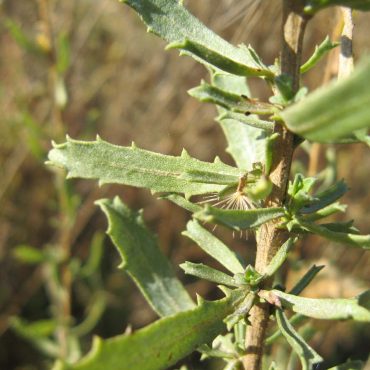
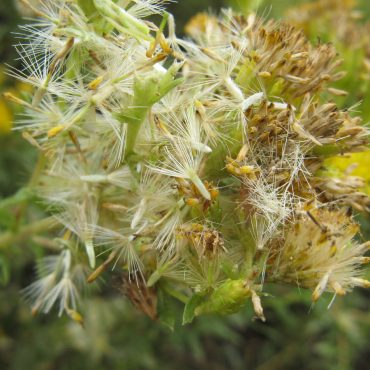
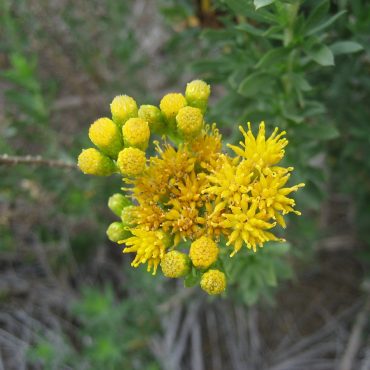
Distribution 7,8,34

Classification
Goldenbush is a dicot angiosperm in the sunflower family, Asteraceae.2,11 This is the largest family of vascular plants in the Northern Hemisphere.143 “Flowers” of Asteraceae are made up of one or both of two types of flowers: symmetrical disk florets and strapped-shaped ray florets. These are crowded onto a common base (receptacle) and together are often assumed to be a single flower, which is called a flower head.44,49
Other familiar Asteraceae that occur in the Reserve include California Sagebrush (Artemisia californica), Bush Sunflower (Enceliacalifornica), and Telegraph Weed (Heterotheca grandiflora).
Species in the genus Isocoma have only disk flowers and a pappus of brownish, silky hairs. There is only one species of Isocoma in the Reserve,48 but the related genus Hazardia contains two species (H. squarosa and H. orcuttii) which occur in smaller numbers in the Reserve and which may be confused with goldenbush.
Goldenbush is a variable species with several recognized varieties. Although only one variety, vernonioides, has been reported from the Reserve,48 other varieties or hybrids may occur.1
Alternate Scientific Names:
Isocoma veneta, Haplopappus venetus
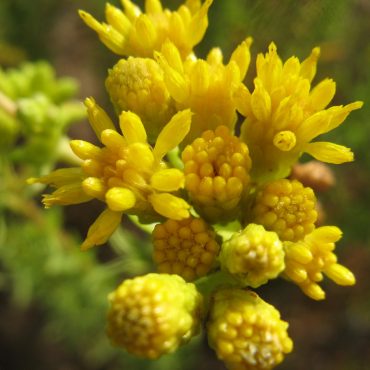
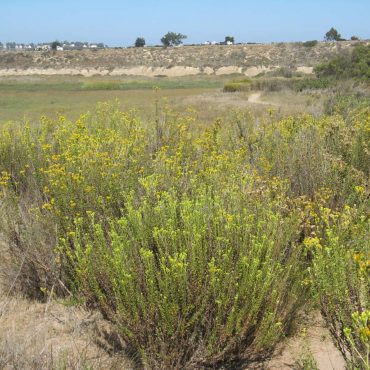
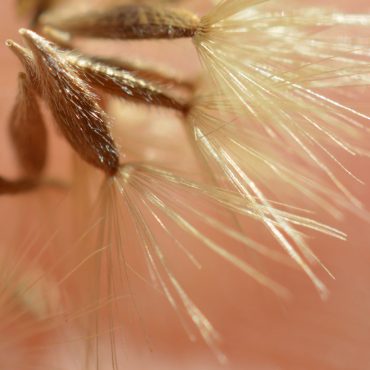
Ecology
Although goldenbush occurs primarily in the coastal sage scrub, the plant remains green during the dry summer months and blooms in the fall, thus avoiding the stiff competition for pollinators that occurs during the spring. To survive the summer rainless period, goldenbush has adaptations that are similar to many chaparral species;39 the evergreen leaves are small, tough and resinous, all characteristics that reduce water loss. Goldenbush also has a well-developed root system to facilitate water uptake.43
Unlike many species of the coastal sage scrub, goldenbush does not resprout readily after a fire.43
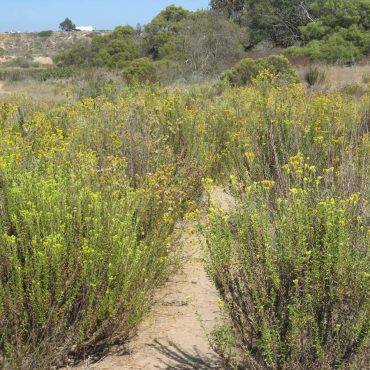
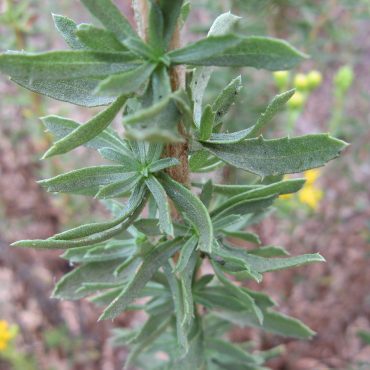
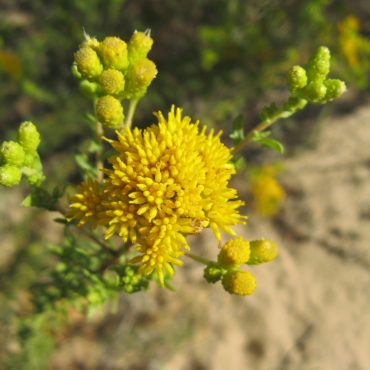
Human Uses
In spite of its abundance, goldenbush does not seem to have been used by native Americans.43 It is not widely used for native gardens, although we have seen it used effectively for fall color in at least one local garden.79 Seeds are often included in seed mixes for revegetation and erosion control.43
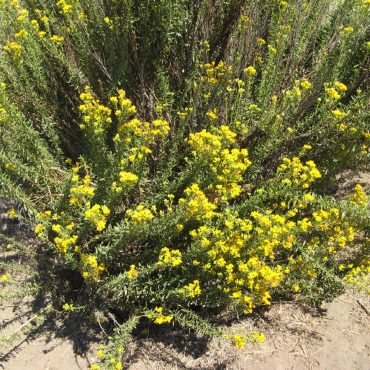
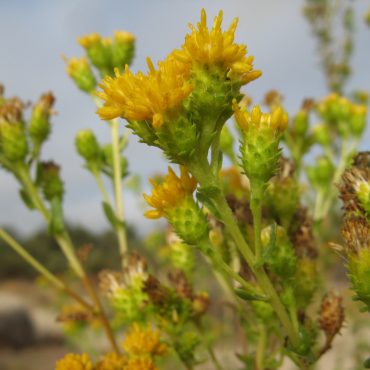

Interesting Facts
In spite of its abundance, goldenbush does not seem to have been used by native Americans.43 It is not widely used for native gardens, although we have seen it used effectively for fall color in at least one local garden.79 Seeds are often included in seed mixes for revegetation and erosion control.43
